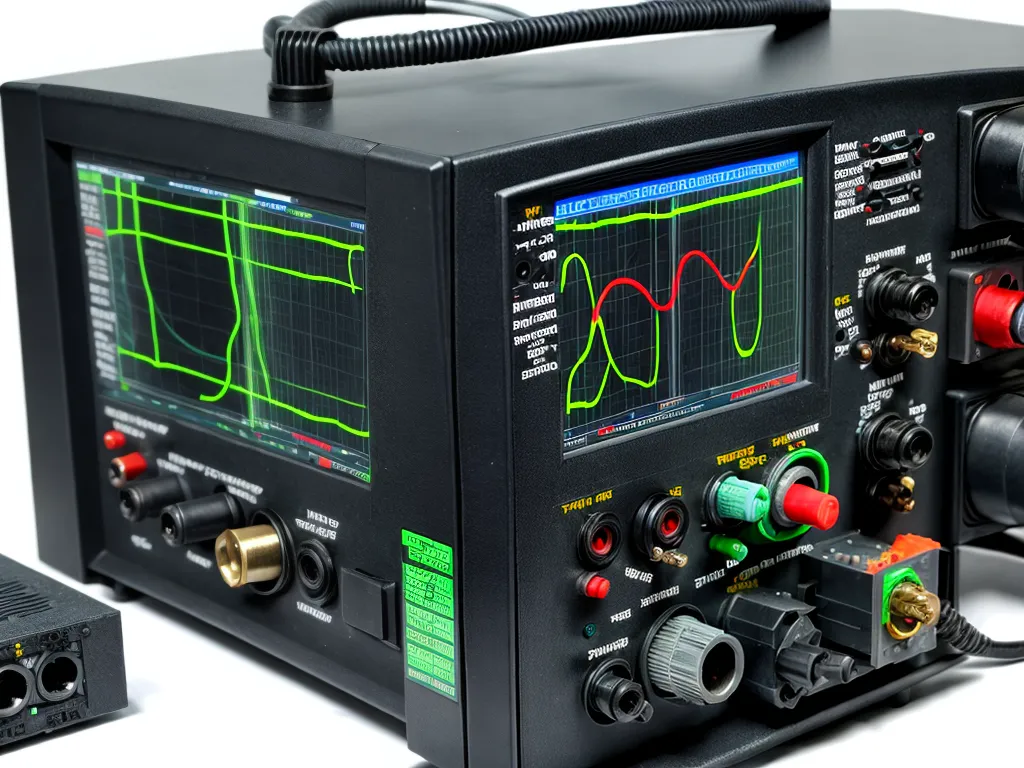
Introduction
Power factor correction is an important aspect of managing power in industrial facilities. Improving power factor can reduce electricity costs and improve system efficiency. However, troubleshooting issues with 3-phase power factor correction equipment can be challenging without the right tools like an oscilloscope. In this comprehensive guide, I will cover how to thoroughly troubleshoot 3-phase power factor correction without an oscilloscope.
Understanding 3-Phase Power Factor Correction
Power factor is a measure of how efficiently electrical power is being used in a system. It is the ratio between the real power being used (kW) and apparent power (kVA). A low power factor indicates inefficient use of power, resulting in higher electricity costs.
Power factor correction (PFC) uses capacitors to counteract inductive loads that cause a lagging power factor. PFC improves power factor by providing leading reactive power to cancel out the lagging reactive power.
In 3-phase AC systems, PFC uses capacitor banks connected across each phase. The goal is to bring the power factor as close to unity (1.0) as possible.
Proper troubleshooting of 3-phase PFC requires understanding potential issues like:
- Failed or degraded capacitors
- Unbalanced capacitor banks
- Excessive harmonics
- Incorrect PFC equipment sizing
Oscilloscopes are useful for analyzing 3-phase power signals. But here are techniques to troubleshoot without an oscilloscope.
STEP 1: Visual Inspection of PFC Capacitor Banks
The first step in troubleshooting 3-phase PFC is a visual inspection of the capacitor bank. Look for:
- Any sign of bulging, leaking, cracked or damaged capacitors. This can indicate imminent capacitor failure.
- Capacitors not evenly spaced or missing. There should be equal capacitors on each phase.
- Discolored or burnt contactors/wiring. Could mean excess heat from harmonic currents.
- Dirt/dust buildup causing insulation issues.
- Corroded bus bars or terminations. Can cause high resistance.
Carefully check capacitor ratings like capacitance value, voltage rating, and kVAR ratings. Ensure ratings match original specifications.
STEP 2: Check Power Factor and Current Readings
Using a power quality analyzer or clamp meter, take power factor and current readings:
- Measure true power factor at the service entrance and downstream of capacitor banks. Should be ≥ 0.95.
- A very low power factor indicates failed/unbalanced capacitors.
- Check current imbalance between phases. Should be < 10%.
- Higher imbalance can mean unbalanced capacitor banks.
Compare present readings with baseline good readings. Significant deviations indicate issues.
STEP 3: Check Voltages and Frequency
Abnormal voltages and frequency can cause PFC issues:
- Measure phase-to-phase and phase-to-ground voltages with a multimeter. Should be balanced within 1%.
- Unbalanced voltages stress capacitor banks.
- Check voltage and frequency against nameplate ratings of capacitors. Operating outside ratings causes premature failure.
- Total harmonic distortion (THD) can be measured with power quality analyzers. Excessive harmonics overheat capacitors.
STEP 4: Check Capacitor Bank Temperature
As capacitors fail, they often run hot. Feeling the surface temperature of capacitors can provide clues:
- Use an infrared thermometer to check temperature relative to other capacitors.
- Hotter capacitors indicate imminent failure.
- Ambient temperature should not exceed nameplate ratings.
Also check contacts, bus bars, and connections for abnormal heating.
STEP 5: Discharge and Test Capacitors
For further capacitor testing:
- Safely discharge capacitors before handling to avoid shock. Short the terminals.
- Measure capacitance. A variance of >10% from nameplate uF indicates end of service life.
- Use a megohmmeter to check insulation resistance. Should exceed 50 megohms.
- Leakage current should not exceed nameplate limit when a voltage is applied.
Replace any capacitors that fail tests. They degrade power factor correction performance.
Additional Tips for Troubleshooting 3-Phase PFC
- Trend power factor and electrical readings over time to detect issues early.
- Inspect equipment during planned maintenance outages when de-energized.
- Consult manufacturer guidelines for proper installation, maintenance and troubleshooting.
- PFC capacitors have limited service life. Budget for replacement every 8-10 years.
- Consider adding harmonic filters if THD is high.
Careful troubleshooting without an oscilloscope allows keeping 3-phase PFC operating optimally. Proactive maintenance prevents expensive downtime and electrical penalties. Assessing power factor correction health does not require advanced tools.